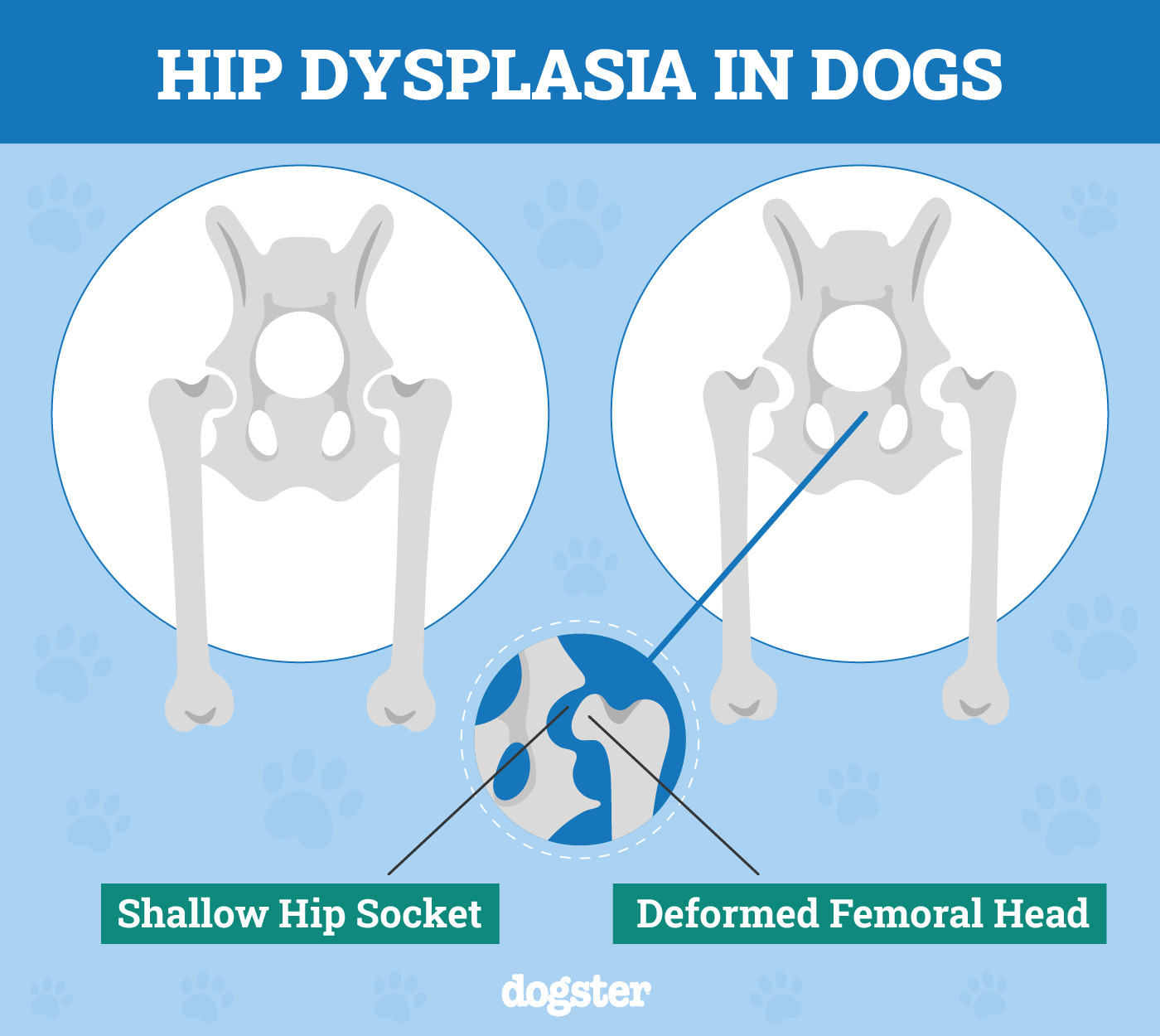Click to Skip Ahead
We all know the tingling feeling that floods our legs when we sit in the same position for too long. This is known in the medical world as “transient paraesthesia,” though most people refer to it as their limbs “falling asleep.” Fortunately, the feeling that accompanies this phenomenon is short-lived and typically clears fast once we get up and move.
You may wonder if your dog’s legs can fall asleep during their naps or after they’ve been sitting down working on their bone or a KONG toy for hours. Yes, your dog can experience that awful pins-and-needles feeling, but it is not something they should suffer from often.
Read on to learn more about why limbs fall asleep, what signs to look for, and what other health conditions could disguise themselves as a sleeping limb.
What Causes Limbs to Fall Asleep?
The reason human and dog limbs fall asleep is because of the pressure put on a peripheral nerve1. This pressure basically squeezes off the nerve or restricts the blood supply, interfering with the nerve’s ability to communicate with the brain and preventing it from conducting sensory impulses. When we relieve the pressure, we get that familiar, uncomfortable pins and needles feeling.

What Are the Signs in Dogs?
Some of the most common signs your pup is dealing with a sleeping limb include:
- Limping
- Shaking the paw
- Licking the leg or paw
It’s crucial to know that these signs can also be indicative of other medical conditions. Just as when it happens to us, the tingly feeling should pass for your pup pretty quickly once they’ve changed their position and got their circulation going. However, if your pet is in pain or if the signs persist beyond a couple of minutes, it’s best to consult your veterinarian to rule out any other potential problems.
Is It Normal for a Dog’s Leg to Fall Asleep?
You shouldn’t be seeing signs of a sleeping leg in your pup on a daily basis or for extended periods. If it happens often, you should have your pet examined by their vet to pinpoint what exactly is causing them to exhibit these signs.

What Can I Do to “Wake Up” My Dog’s Limbs?
It can be quite distressing for your pet to wake up and not have full function of their legs. We all know how painful a sleeping leg or arm can be when it “wakes up,” but we understand why it happens and can limit how much we move until the feeling has come back. Unfortunately, we can’t tell our dogs to be patient and ride it out, so they’ll have no clue what’s happened or why.
The good news is that the discomfort associated with a waking limb is short-lived. You can encourage your dog to walk around to get their circulation going, but they should be back to their normal gait in a few minutes.
What Else Could Be Causing These Signs?
Many other things could cause your dog to limp or favor a specific leg when they first get up from their nap or after sitting in one spot for a long period.
Arthritis
Arthritis, also known as osteoarthritis (OA), is a common and progressive joint disease in dogs. It develops when a dog’s joints become inflamed and start to degenerate, leading to pain and limping. OA can occur with joint malformations, injuries, or wear and tear.
Dogs with OA can exhibit several signs that can be mistaken for a sleeping leg, including lameness and changes in their gait. Other signs of OA include:
- Stiffness
- Decreases in activity
- Difficulty navigating stairs
- Muscle wasting
- Behavioral changes

Injuries
Your pup’s limping could occur as a result of an injury. Injuries can vary greatly in severity, so if you notice them exhibiting prolonged limping, schedule a visit with your veterinarian. It could be something like a mild sprain, which is relatively minor and requires minimal care, or as serious as a torn cruciate ligament.
Other signs your pup is injured include:
- Yelping
- Behavior changes
- Swelling
- Lethargy
- Excessive licking
- Problems walking
- Panting
Orthopedic Problems
Orthopedic health problems in dogs are diseases, conditions, or injuries that affect the skeletal structures (bones, tendons, joints, etc.). Some of the most common orthopedic issues seen in dogs include hip dysplasia, luxated patella, intervertebral disc disease, and elbow dysplasia.
Signs your pup is suffering from orthopedic issues include:
- Abnormal posture
- Difficulty standing up
- Difficulty laying down
- Limb favoring
- Limping
- Stiffness

Final Thoughts
After they’ve been laid down in one position for an extended period, dogs may experience the tingly, pins-and-needles feeling associated with a sleeping limb. However, this isn’t something that you should see consistently. If your dog is limping excessively, favoring a leg, or shaking their paws often, it’s worth taking them to the vet for an examination to rule out any other potentially serious health conditions.
Featured Image Credit: Prystai, Shutterstock









